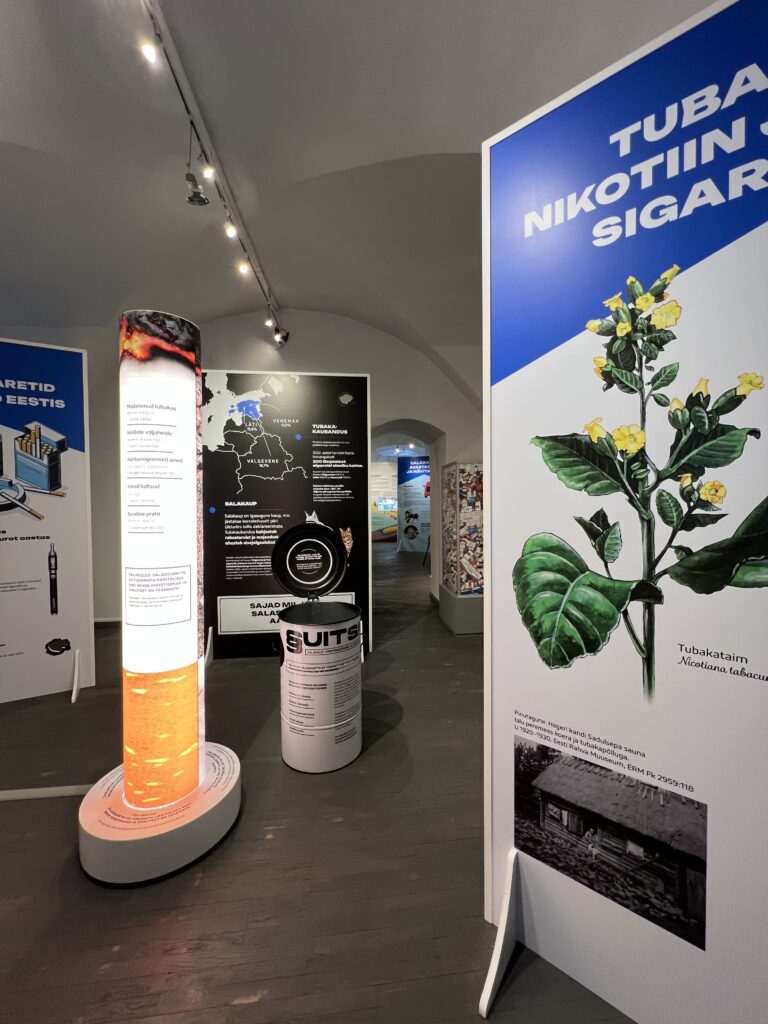Smoke. Contraband: Confiscation and Punishment
The Estonian Police Museum’s new exhibition warns against the use of illegal cigarettes.
The Police Museum has opened a new exhibition titled §moke. Contraband: Confiscation and Punishment.
The forbidden fruit is said to be the sweetest – a saying that could well be used to describe smuggling. In every part of the world, there is always someone trying to avoid prohibitions and restrictions on trade. Smuggling, contraband and illicit trade are age-old transgressions, and countries have fought to shut them down for just as long.
The focus of this exhibition is on the illegal tobacco trade, an area in which smugglers and those who hunt them are constantly finding new ways to outwit each other. Visitors will learn what a bin survey is, how dangerous illegal cigarettes can be, and how plywood submarines and drones are used in smuggling operations. One of the most effective ways to combat crime is through the identification and confiscation of criminal assets, and the exhibition will explore just how these are done in the fight against the illegal tobacco trade. The items on display at the exhibition include a diver caught on the eastern border and various objects used to conceal contraband.
According to Andrus Eesmaa, head of the Estonian Police Museum, the idea for the exhibition came about through a fortunate set of circumstances: “It all started with Arvids Tisler, who was then working at the Tax and Customs Board. It turned out that the agency had a lighting system and other equipment in storage that could be exhibited in the museum instead of being destroyed. Once Philip Morris Estonia came on board, the plan really gained momentum.” In addition to Phillip Morris Estonia, the museum’s partners in organising the exhibition included the Tax and Customs Board, the Police and Border Guard Board, Viru County Court and the creative agency kiop.agency.
According to Kai Tammist, Director of External Affairs at Philip Morris Estonia, the illegal trade in tobacco and nicotine products harms both the state and legitimate businesses. This was well illustrated by a 2023 study by KPMG, which estimated that this area of criminal activity alone cost Estonia around 30 million euros a year in lost tax revenue. “Tackling illegal trade requires strong cooperation between the public and private sectors, increased awareness and joint action. Working with the Estonian Police Museum helps raise consumer awareness and engage society in solving the problem,” said Kai Tammist.
Alongside §moke. Contraband: Confiscation and Punishment, the Police Museum is also holding a series of expert lectures and starting a new outreach programme to inform schoolchildren of the dangers of illegal cigarettes. “We want to reach children and young people to prevent tobacco use and explain the dangers of smuggling,” added Andrus Eesmaa.
Exhibition team
Curators: Margit Pulk, Andrus Eesmaa, Inge Laurik-Teder
Consultants: Kristi Ehrlich, Raivo Metsma, Arvids Tisler
Smoke installation: Elo Liiv, Moonika Kiop
Creative writer: Andres Siem
Language editing and translation into English and Russian: Refiner
Designers: Elina Kasesalu, Marc Konno
Creative agency: kiop.agency
Print: Comdecor
Project managers: Andrus Eesmaa, Moonika Kiop, Grete Nellis, Margit Pulk
The exhibition is open at the Police Museum (Tallinna 3, Rakvere) from 20 February 2025 to 31 March 2028. For opening hours and further information, visit: www.politseimuuseum.ee.
Further information:
Andrus Eesmaa
Director of the Estonian Police Museum
Virumaa Museums
Phone +372 5886 7057

